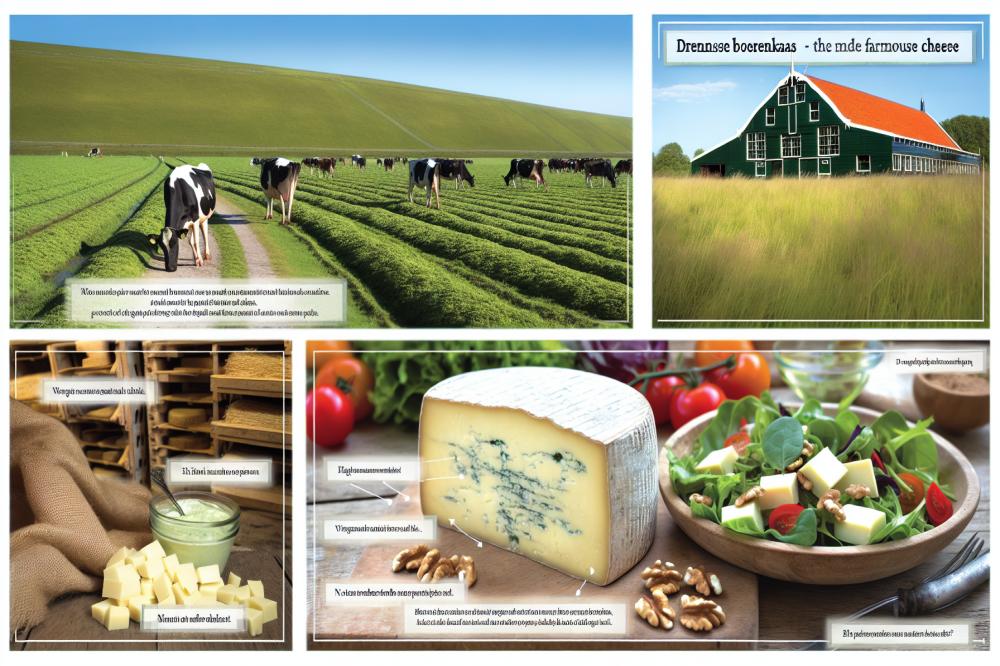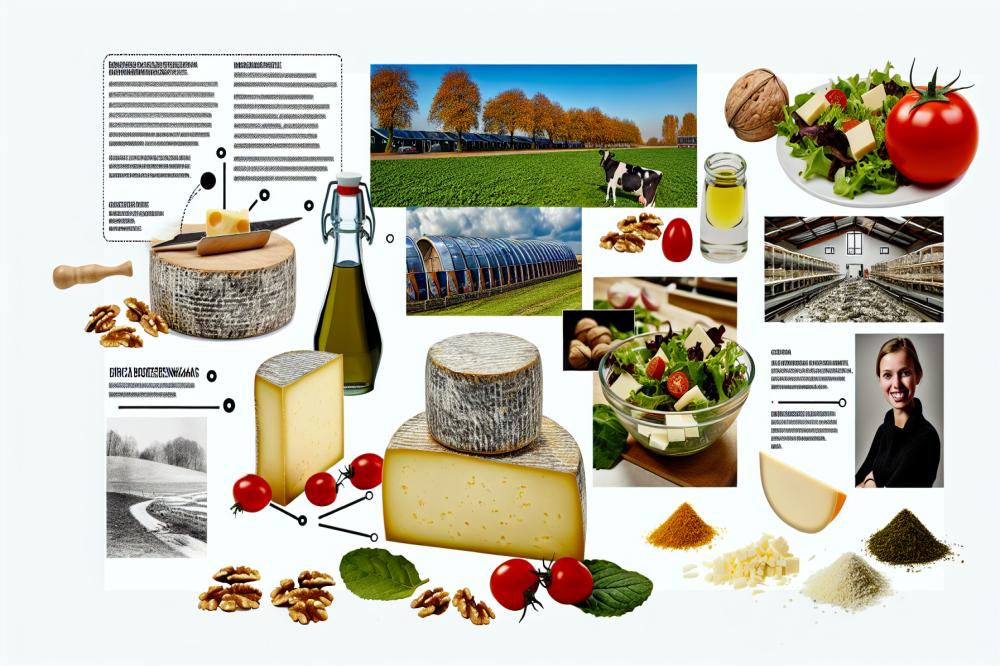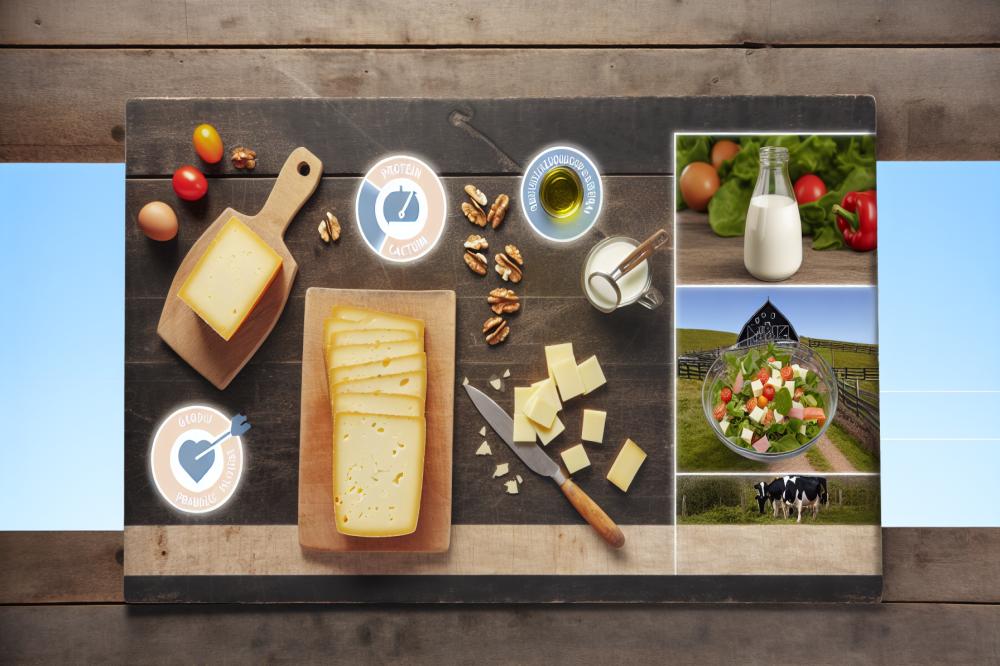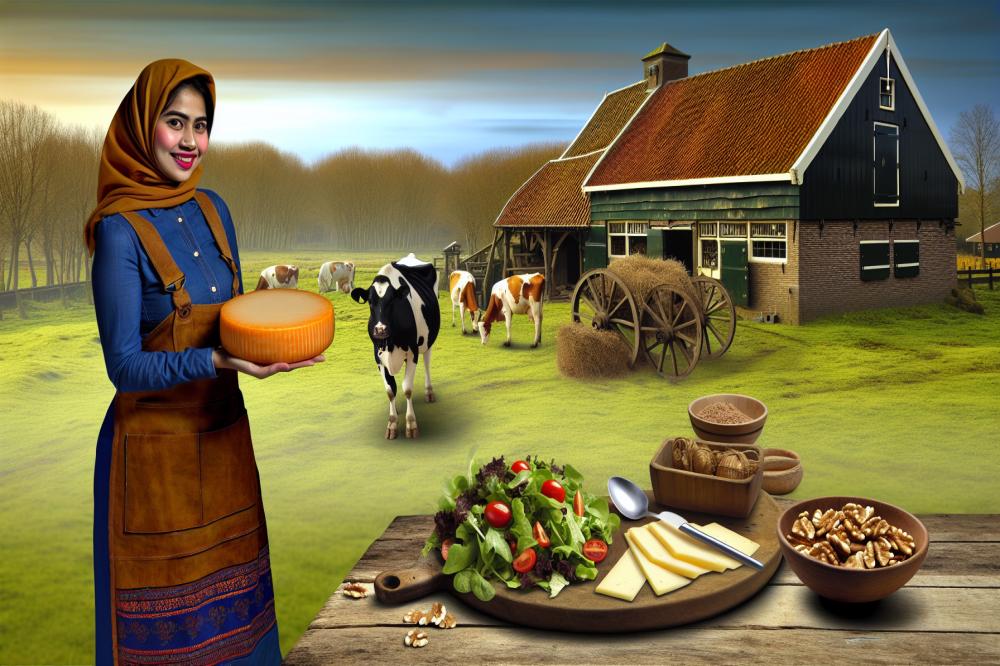Overview of Drentse Boerenkaas
Drentse Boerenkaas is a remarkable type of farmhouse cheese that originates from the serene region of Drenthe in the Netherlands. This cheese reflects the rich agricultural traditions that have been passed down through generations. The land is known for its lush pastures, which play a vital role in producing high-quality milk. Farmers in this region take pride in their production methods, often using raw milk gathered from their own herds.
As a staple in Dutch cuisine, Drentse Boerenkaas holds a special place in the hearts of many. It is not just a food item; it carries cultural significance and tells a story about the lifestyle of the people in Drenthe. Traditionally, this cheese is enjoyed on bread or as part of a cheese platter during celebrations or gatherings. Its presence can elevate any meal and adds a touch of local flavor.
The qualities of this cheese are quite noteworthy. It features a creamy texture and harmonious balance of flavors. The aging process allows the taste to develop, becoming sharper over time. Many people appreciate the depth that comes from the artisanal methods employed in its making. Moreover, each batch has its own character, influenced by the local environment and the cows’ diets.
In summary, Drentse Boerenkaas is much more than just a food product. It embodies the heritage and dedication of the farmers from Drenthe. Appreciating this cheese means recognizing the time-honored practices that contribute to its distinctive qualities and role in Dutch gastronomy.
Drentse Boerenkaas

Drentse Boerenkaas is a traditional farmhouse cheese from the Drenthe region in the Netherlands. Its texture is firm yet creamy, making it pleasurable to slice and enjoy. Often, this cheese has a lovely nutty flavor with hints of grassy notes. The taste can vary depending on the milk used, as it comes from cows that graze on different types of pasture. This variety adds depth to each wheel produced.
One of the essential elements in its production is the use of raw milk. Many cheesemakers believe that using unpasteurized milk contributes to a richer flavor profile. This method respects the natural bacteria found in the milk, allowing the cheese to develop its unique characteristics. Additionally, the cheese is typically aged for several months, which enhances its complexity.
Traditional cheesemaking techniques are still prevalent in Drenthe. Most producers follow methods passed down through generations. This commitment to heritage ensures that each cheese remains true to its roots. Rennet, cultures, and salt are carefully combined to create a distinct curd. After the curds have formed, they are pressed into molds and allowed to drain. The process is labor-intensive but yields high-quality cheese.
In the broader context of dutch cheeses, Drentse Boerenkaas holds a special place. It is a representative of the country’s rich dairy farming traditions. Many people appreciate this cheese for its robust flavor and artisanal qualities. Cheddar and Gouda are often more popular, but Boerenkaas offers a unique alternative. Culinary enthusiasts enjoy pairing it with bread, fruits, or enjoying it on its own.
Farmhouse cheeses like this one not only showcase local flavors but also support regional agriculture. By choosing Drentse Boerenkaas, consumers contribute to sustainable farming practices. Many cheesemakers prioritize animal welfare and environmental responsibility. This cheese reflects both the land of Drenthe and the craftsmanship of its artisans.
Farmhouse Cheese

Farmhouse cheese represents a traditional method of cheese-making that emphasizes artisanal practices. This approach often involves small-scale production, where cheesemakers rely on skills passed down through generations. In contrast to industrial cheeses, farmhouse varieties are made in limited batches, which promotes a deep connection to the land and the local farming community.
Local farming practices play a significant role in the flavor profiles of these cheeses. Many producers use the milk from their own herds, ensuring freshness and quality. Cows, goats, or sheep raised on regional pastures provide milk that reflects the local flora, thus influencing the taste and character of the final product. As a general rule, the diet of the animals contributes distinctive notes to the cheese.
Raw milk is crucial in the making of farmhouse cheese. This unpasteurized milk retains the natural bacteria and enzymes that contribute to unique flavors. Producers often believe that using raw milk leads to a richer, more complex taste. The bacteria present in fresh milk helps in the fermentation process, resulting in a cheese with character and depth.
Different regions also add their personal touch. The climate, soil type, and local herbs affect what cows graze on, altering the milk’s composition. Each area can create a different experience for consumers. This regional diversity is celebrated, as it connects people to the land and the farming traditions that have existed for centuries.
The artisanal approach alongside the influence of local farming shapes the identity of farmhouse cheeses. By prioritizing quality ingredients and traditional methods, cheesemakers uphold the integrity of their craft. In every bite, you can sense the labor, care, and history embedded within these remarkable cheeses.
Recipe: Drentse Boerenkaas Salad

Ingredients:
- 200g Drentse Boerenkaas, cubed
- 150g mixed greens
- 50g cherry tomatoes, halved
- 50g walnuts, chopped
- 2 tablespoons olive oil
- 1 tablespoon balsamic vinegar
- Salt and pepper to taste
Instructions:
- In a large bowl, mix the mixed greens, cherry tomatoes, and walnuts.
- Next, add the cubed cheese.
- Whisk together olive oil, balsamic vinegar, and the seasoning in a separate bowl.
- Drizzle the dressing over the salad and toss everything gently.
- Serve the salad fresh for the best flavor.
Nutritional Information (per serving):
- Calories: 300
- Protein: 10g
- Fat: 25g
- Carbohydrates: 10g
- Fiber: 2g
Health Benefits:
This cheese offers various health advantages. One significant benefit is its protein content. Protein is essential for muscle repair and growth, making it important for everyone, especially active individuals. Calcium is another vital nutrient found in this cheese. Consuming calcium is crucial for strong bones and teeth.
Additionally, raw milk, often used in traditional cheese-making, can contain probiotics. Probiotics are beneficial bacteria that support a healthy gut. They can aid digestion and improve overall well-being. Incorporating this cheese into meals can provide nourishment along with delightful taste.
Final Thoughts
Drentse Boerenkaas holds a significant place in Dutch culture, especially in the region of Drenthe. This farmhouse cheese reflects the traditions and agricultural practices of the area. Made with care and often crafted by local artisans, it is more than just a culinary item; it represents a connection to the land and its heritage.
This cheese is remarkably versatile. It can be enjoyed in various recipes, from simple sandwiches to gourmet dishes. Grating it over pasta adds a delightful richness. Melting it in a fondue brings a cozy atmosphere to any gathering. Pairing it with fruits and nuts creates a splendid cheese board for entertaining guests. The possibilities are endless.
Exploring this farmhouse cheese can be a delightful experience. Trying it may introduce new flavors. Whether served at a family dinner or as part of a festive celebration, it adds a special touch. The journey through its taste and texture invites food lovers to discover the essence of Dutch cuisine. One bite leads to a greater appreciation of local foods and traditions.



